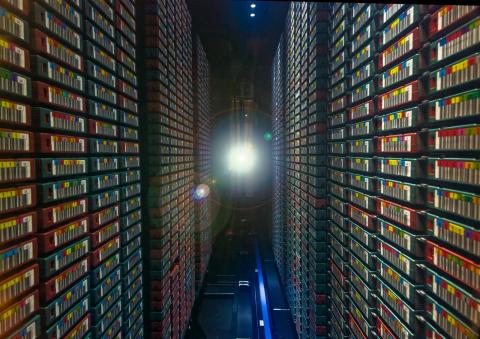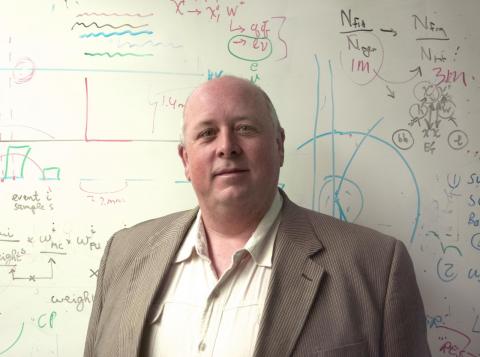

The Large Hadron Collider (LHC) is taking a long deserved break from smashing high-energy proton beams and making Nobel prize-worthy discoveries — like that of the Higgs boson in 2012. After almost exactly three years of operation, the LHC at CERN in Geneva, Switzerland has been shutdown for the first of several so-called "Long Shutdowns."
But it's not all relaxing on a beach and sipping mai tais for the world's largest and most powerful particle accelerator and the thousands of physicists, engineers and students that operate it. When the 7 billion dollar particle smasher restarts later this spring it is expected to collide proton beams at an energy level of 14 TeV, almost double the 8 TeV it was operating at back in 2012 (one electron volt, or 1 eV is the energy generated from a single electron moving through a potential of 1 Volt).
Teams at TRIUMF and around the world are working their darndest to prepare their equipment and researchers for the task ahead. As Canada's link to the LHC, TRIUMF houses one of ten ATLAS Tier-1 data centres (pictured) across the world, with a real-time, direct link to one tenth of the data coming fromthe ATLAS detector. The computing centre – which already looks like the final spaceship scene of 2001: A Space Odyssey – is built to take in data from the LHC at a rate of 40 Gb/s, and currently stores 16.5 petabytes (that's 16 500 terabytes) of data! Several times the data stored by the US Library of Congress and Wikipedia.
"At the time the LHC discovered a Higgs, we saw events with a frequency of 1-200 Hz. At these new energy levels, we are expecting to see events at up to 1000 Hz and of course TRIUMF records one tenth of all events at ATLAS," says Dr. Robert McPherson, University of Victoria professor. That means that TRIUMF will receive roughly 100 events per second from the ATLAS detector! "All while maintaining the same sensitivity we had before," he adds.
It's not just the equipment and technical specs of the LHC that are being upgraded during the shutdown, physicists are also turning their wrenches and screwdrivers to the theories that are soon going to be put to the test.
What does almost doubling the energy of the LHC mean for the world of particle physics?
Robert, who is also deputy spokesperson for the ATLAS experiment (one of the experiments that discovered the Higgs) and its international thousand plus team, says that the ATLAS team is extremely hopeful they will discover something big. "The jump in energy from 8 TeV to 14 TeV is significant. The previous few leaps in energy of this magnitude that occurred discovered things such as the top quark and the Z-boson."
One of the prime candidates for the next big discovery is supersymmetry or SUSY." Supersymmetry, at its core, says that each fundamental particle has a super-symmetrical version of itself which can be seen if the collider energy is high enough. It's as if a supersymmetric electron was an electron seen through a funhouse mirror," Rob explains. "Many physicists are looking to SUSY as the answer to the dark matter question: where does most of the mass of the Universe come from?"
Dark matter is a mystery that has been plaguing astronomers and physicists alike for some time now. It's a mysterious kind of matter that only interacts on the extremely large (think galactic!) scale and ultimately accounts for more than 3/4ths of the observed mass of the Universe. The LHC is searching for the answer to this mystery in the debris of the proton collisions.
"There are big expectations surrounding the search for SUSY, and I'm glad to be a part of the hunt," says Claire David, a senior PhD student from France currently doing her thesis at TRIUMF through the University of Victoria using data from the ATLAS detector. "But it's important to keep in mind that in science, not making a discovery still a significant result. You don't get to make a big announcement like when they found a particle like the Higgs, but it is no less important."
Almost one third of the over 3000 researchers working on the ATLAS experiment are students like Claire, hoping to launch their careers using data from the LHC. "All this data from these particle detectors flow through the Tier-1 centre here at TRIUMF," says Claire who was a master's-level engineering student in a past life. "When I first became interested in data analysis they told me that I would need a PhD. I like this research; here we are testing our understanding to the limit. It's as if we are on the edge of a cliff, it's very uncomfortable but exhilarating at the same time!"
Much to the anticipation of tens of thousands of excited physicists, students and protons, the LHC is scheduled to fire up its beams for the second time in early 2015.
-Christopher Zaworski, Outreach
Photos (from top to bottom): ATLAS Tier-1 Tapes at TRIUMF, Rob McPherson in his office and Claire David at CERN outside the ATLAS Detector.
For more photos of the Canadian ATLAS Tier-1 Data Centre visit our flickr page.
